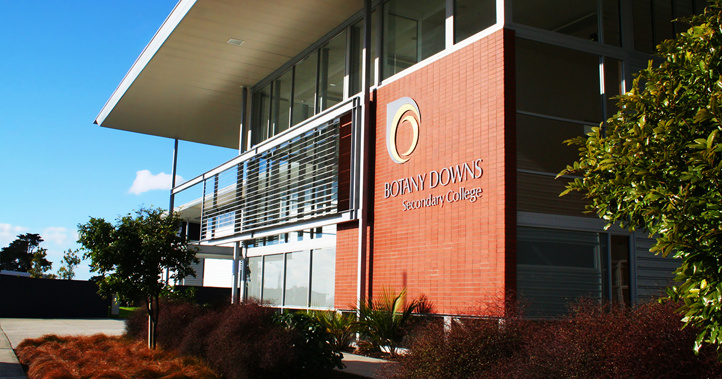
A construction company has been ordered to pay about $13 million for leaky buildings that have troubled an Auckland school for the past eight years.
Botany Downs Secondary College, a co-educational school with a roll of nearly 2000, resorted to using buckets in classrooms to deal with the leaks, a court has heard.
The three plaintiffs — the Minister of Education, Secretary for Education and the school's board of trustees — said leaks in nine buildings were caused by construction defects.
H Construction North Island Ltd, formerly known as Hawkins Construction North Island Ltd (Hawkins), built the buildings between 2003 and 2009.
In a decision released today, Justice Jonathan Downs said Hawkins must pay the plaintiffs $13,424,967.40 plus GST.
If the parties could not agree in relation to costs, the plaintiffs could file a submission by May 15 and Hawkins had the opportunity to respond by May 29.
"The sum is not small, but Hawkins was paid approximately $28 million to build the school; pupils and teachers have not had the benefit of healthy code-compliant buildings for eight years; and the award reflects the amount necessary to repair the School, not more," Justice Downs said.
Justice Downs said Hawkins was liable to pay the cost of remedying four out of five defects and for a component of a sixth.
These defects included inadequate ground clearance, poorly formed metal roofs and poorly formed internal gutters.
"An aspect of Hawkins' defence, at least to some elements of the claim, is that fault lies with the architect because of design failings," the judgment reads.
"However, Hawkins did not join the architect as a (third) party, or subpoena any of its personnel as witnesses.
"This approach is available, but artificial. Consequently, this judgment does not identify the architect. Or, make determinations adverse to it."
/arc-anglerfish-syd-prod-nzme.s3.amazonaws.com/public/4QV5C5IESRFCLAT5DUSMSPISM4.png)
Botany Downs Secondary College principal Karen Brinsden told the Herald it was still early days. "It's been a long journey, I am very very pleased with the outcome." (Photo / File)
Justice Downs visited the school on day two of the trial - it rained throughout.
"Two live leaks were obvious: from the gymnasium roof, onto the floor; and from the roof of the administration building into the staffroom. Each had an accompanying bucket."
A piece of particle board taken from underneath rotten carpet in a gymnasium staff office and was entered into evidence as it "had the consistency of Weetbix".
The wooden floor of the gymnasium and performing arts centre sits on packers - some of which are timber but all of which were meant to be rubber.
The timber ones were rotting because water had entered the space below the floor and the floor was dropping.
Many temporary repairs had been needed at the school.
This included the replacement of about 200 water-stained ceiling tiles, installation of temporary gutters to the pop-up roofs, extensive replacement of roof fixings and use of temporary flashings.
Extensive replacement of roof fixings and use of temporary flashings would later be described by a building surveyor as "like putting a finger in a dam".
Botany Downs Secondary College principal Karen Brinsden told the Herald today it was still early days.
"It's been a long journey, I am very very pleased with the outcome."
The Ministry of Education Head of Education Infrastructure Service Kim Shannon said it would now "take the necessary steps to enforce the award of damages in its favour".
A Hawkins representative said the company was surprised by the result but wanted to reflect on the decision before commenting.
The leaky building crisis, which emerged in the early 2000s, has hit schools particularly hard. In 2011 former Prime Minister John Key said an estimated 96 per cent of school buildings modified between 1995 and 2005 had weather tightness issues.
The following year a survey estimated more than 3000 leaky buildings - 18 per cent of all school property by area - needed fixing at a cost of $1.4 billion. The estimate was later revised down to 2500 buildings and a $1.1b price tag.
Only about 500 buildings have been repaired since work began in 2011 at a cost of $425m - an average cost of $850,000 per building (including some upgrades done at the same time).
Last year Shannon told the Herald that further investigation had shown just over 1000 buildings still needed weather tightness repairs. The cost was still unknown but the work was expected to be quicker and cheaper than before.
Take your Radio, Podcasts and Music with you









